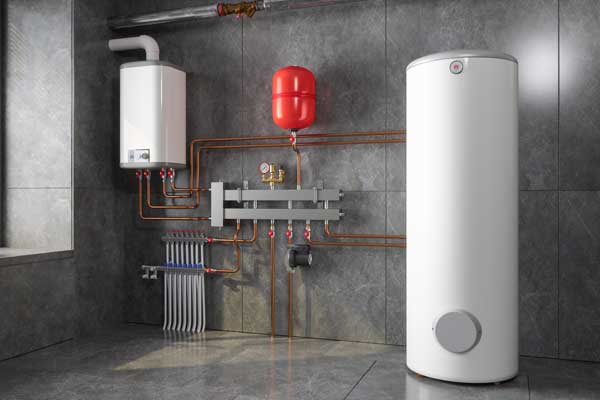Easy Steps to Caring for Your Home's Hot Water SystemEffective Methods to Care for Your Home's Hot Water System Effectively
Easy Steps to Caring for Your Home's Hot Water SystemEffective Methods to Care for Your Home's Hot Water System Effectively
Blog Article
Have you been looking for facts and techniques on What Kind of Maintenance Do Water Heaters Need??

Warm water is vital for day-to-day convenience, whether it's for a refreshing shower or washing recipes. To guarantee your hot water system runs successfully and lasts longer, routine upkeep is vital. This short article gives practical ideas and understandings on how to maintain your home's hot water system to stay clear of disruptions and costly repair services.
Intro
Maintaining your home's warm water system could seem daunting, but with a few basic steps, you can ensure it runs smoothly for several years to come. This overview covers everything from recognizing your hot water system to DIY upkeep suggestions and recognizing when to hire expert aid.
Importance of Keeping Your Warm Water System
Normal upkeep not just extends the lifespan of your hot water system but likewise guarantees it runs efficiently. Ignoring upkeep can result in reduced performance, higher energy costs, and also early failing of the system.
Indicators Your Warm Water System Demands Upkeep
Recognizing when your warm water system requires attention can prevent major problems. Watch out for indications such as irregular water temperature, unusual noises from the heater, or rusty water.
Understanding Your Hot Water System
Before diving into upkeep jobs, it's valuable to recognize the basic components of your hot water system. Normally, this consists of the water heater itself, pipes, anode rods, and temperature level controls.
Monthly Maintenance Tasks
Regular regular monthly checks can assist capture small problems prior to they rise.
Purging the Hot Water Heater
Purging your hot water heater gets rid of debris build-up, boosting performance and lengthening its life.
Monitoring and Changing Anode Rods
Anode poles prevent corrosion inside the storage tank. Examining and replacing them when worn is important.
Checking and Adjusting Temperature Settings
Adjusting the temperature setups makes certain optimum efficiency and safety and security.
Do It Yourself Tips for Maintenance
You can perform several maintenance tasks on your own to maintain your hot water system in top problem.
Looking for Leakages
Frequently check pipes and connections for leakages, as these can cause water damage and higher expenses.
Checking Pressure Relief Valves
Examining the pressure safety valve ensures it works correctly and avoids excessive stress build-up.
Shielding Pipelines
Shielding warm water pipes lowers warmth loss and can conserve power.
When to Call a Specialist
While do it yourself upkeep is beneficial, some problems need specialist experience.
Facility Problems Requiring Specialist Assistance
Instances include major leaks, electric troubles, or if your hot water heater is continually underperforming.
Routine Professional Upkeep Perks
Specialist upkeep can include thorough assessments, tune-ups, and ensuring conformity with security standards.
Final thought
Normal maintenance of your home's hot water system is necessary for effectiveness, long life, and cost financial savings. By complying with these suggestions and knowing when to look for specialist assistance, you can guarantee a reputable supply of hot water without unanticipated disruptions.
How to Maintain an Instant Hot Water Heater
Before tinkering with your hot water heater, make sure that it’s not powered on. You also have to turn off the main circuit breaker and shut off the main gas line to prevent accidents. Also turn off the water valves connected to your unit to prevent water from flowing into and out of the appliance. 2. When you’re done, you have to detach the purge valves’ caps. These look like the letter “T” and are situated on either side of the water valves. Doing so will release any pressure that has accumulated inside the valves while at the same time avoid hot water from shooting out and burning your skin. 3. When the purge valves’ caps are removed, you have to connect your hosing lines to the valves. Your unit should have come with three hoses but if it didn’t, you can purchase these things from any hardware or home repair shops. You can also get them from retail stores that sell water heating systems. Read the user’s manual and follow it to complete this task properly. When the hosing lines are connected, open the purge port’s valves. 4. You should never use harsh chemical cleaners or solutions when cleaning your unit. Make use of white vinegar instead. It should be undiluted and you’ll probably use about 2 gallons. 5. Now flush your water heater. This task should probably take about 40 minutes. We can’t give you specific directions for this because the procedure is carried out depending on the type, model and brand of your heater. With that being said, refer to the user’s manual. 6. When you’re done draining the unit, you have to turn off the purge port valves again. Remove the hosing lines that you earlier installed on each of the water valves. Put the valve caps (purge port) back in their respective places and be very careful so as not to damage the rubber discs that are found inside these caps. 7. Now that everything’s back in place, check your user’s manual again to find out how to reactivate your water heating system. 8. Once it is working, turn one of your hot water faucets on just to let air pass through the heater’s water supply pipes. Leave the tap on until water flows smoothly out of it. https://www.orrplumbing.com/blog/2014/september/how-to-maintain-an-instant-hot-water-heater/

As an avid person who reads on Tips on Maintaining a Water Heater, I assumed sharing that information was important. Sharing is caring. Helping people is fun. Bless you for being here. Don't forget to check up our site back soon.
Contact Report this page